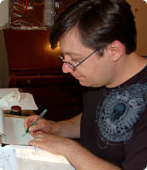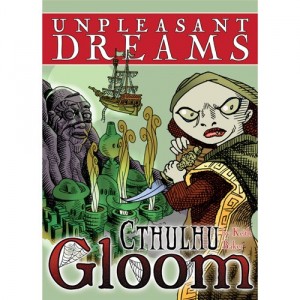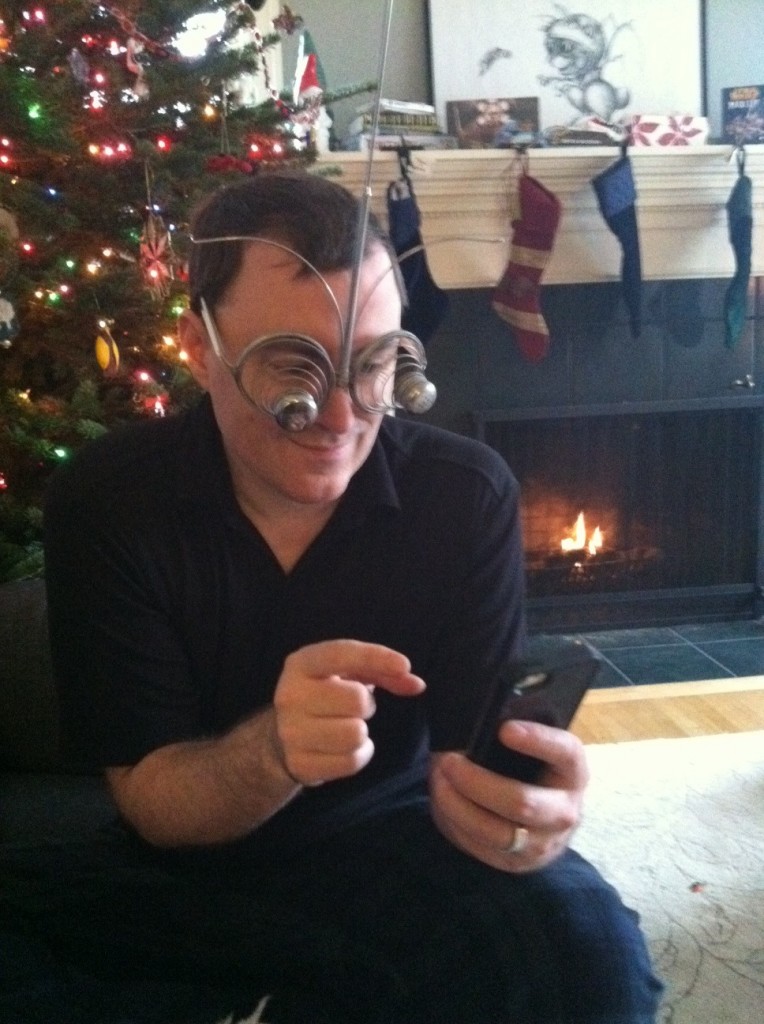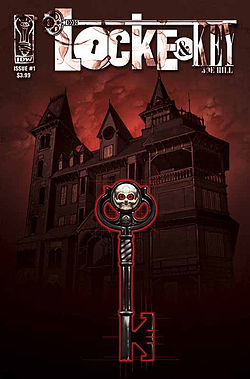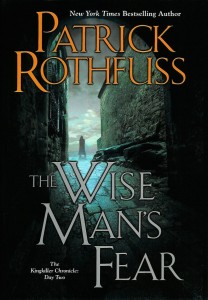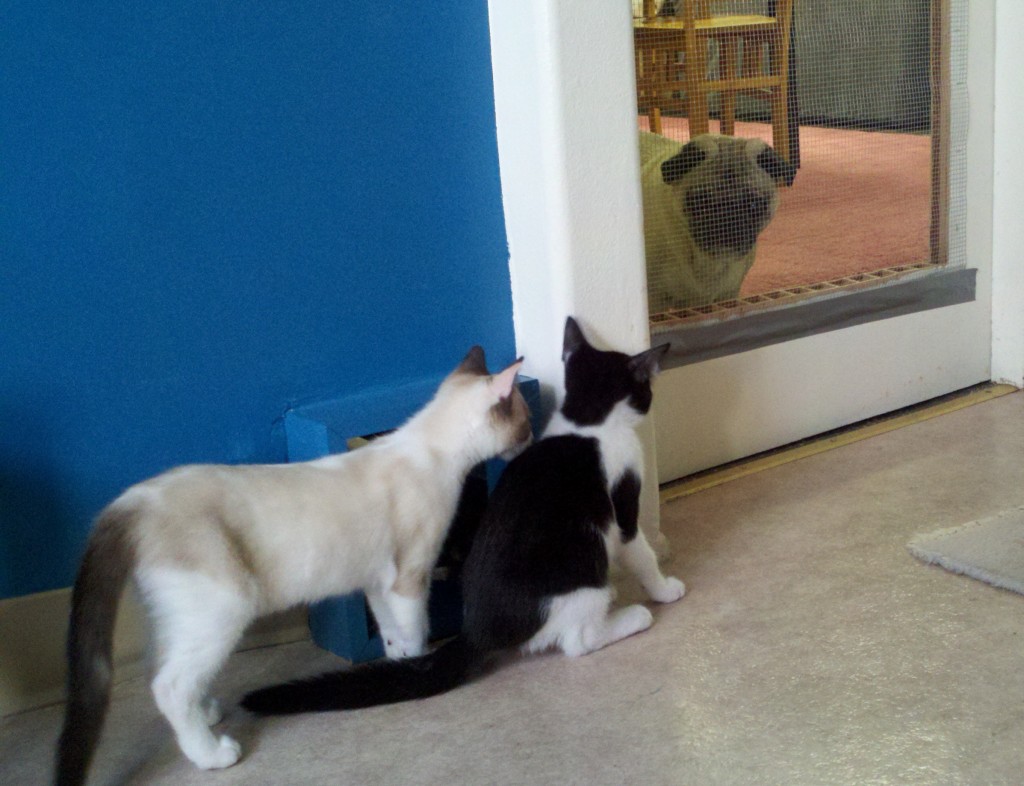This will likely be the last Dragonmark of 2012. Come the new year, I will be focusing most of my creative energy on my new world, which I’ll talk more about next week. In months ahead, I will be discussing elements of the new world and asking for your opinions on different things. However, Eberron remains close to my heart and I will continue to do Dragonmark posts; they’re just more likely to be monthly than weekly. And while I have no new information on the subject, I hope that Eberron will be supported in D&D Next – if you want to see Eberron support in DDN, keep asking WotC and hope for the best!
As always, the answers to the questions below are my personal opinions and may conflict with canon sources.
If Krozen’s evil, shouldn’t Boranel be evil too? He uses his dark lanterns to commit assassination, theft etc: evil acts.
Does he? Again, for my opinions on alignment in Eberron, take a look at this post. I’d pay particular attention to the discussion of Kaius and Aurala, and the note that Aurala’s generals and ministers may engage on actions on behalf of Aundair she wouldn’t personally condone.
Let’s compare Zilargo and Breland for a moment. Both have exceptional intelligence services. Both employ assassins. But just how do they employ those assassins? In Zilargo, the Trust routinely deploys assassins against its own citizens. Not only that, it regularly engages in pre-emptive assassination, killing people who haven’t yet committed any crime (but will if they aren’t stopped). They are content to, in short, rule through terror and the threat of execution.
In Breland, Lord Ruken ir’Clarn is the leader of a movement determined to end the Brelish monarchy when Boranel dies. He seeks to rob Boranel’s children of their birthright and change Brelish tradition. And yet, he’s still alive. Do you think Boranel doesn’t know what he’s up to? Do you think that Ruken is somehow so amazing that the Dark Lanterns couldn’t kill him? No on both counts. His shield is that he’s a Brelish noble and member of parliament whose actions are, by and large, purely democratic in nature. Boranel doesn’t want ir’Clarn to succeed, but if it the will of the people that he does, Boranel will accept it. I’ll also point to the fact that despite the Citadel being a key edge Breland had over the other nations during the Last War, Dark Lanterns were never deployed to assassinate other kings or queens. They were certainly employed in the war – look to Thorn’s Far Passage assignment – but there were places the king wouldn’t go.
Looking to the Thorn of Breland novels, Thorn’s first assignment is to recover a prisoner from a nation that is NOT a signatory of the Treaty of Thronehold and thus not bound by the Code of Galifar. Thorn is told that she is authorized to kill that prisoner’s jailer if need be, but that isn’t the mission; she’s there to rescue a prisoner, not specifically to assassinate a foreign leader. In the second novel, she is sent to identify a terrorist threat to Breland, and if it exists, to eliminate its leader. This is a straight-up assassination, true, but again it is targeting a criminal who potentially poses a threat to every citizen of Sharn… and she’s instructed to confirm that he is a threat before carrying out the sentence (and she’s pretty cranky about acting as what she sees as a paid assassin for House Cannith). In the third novel, her initial assignment is to protect Prince Oargev from assassins, and she’s authorized to use lethal force in the process – but she’s there in a defensive capacity. Breland is willing to employ assassination as a tool against terrorists and monsters. But it doesn’t use it casually and it chooses targets carefully. More important is the fact that Boranel is King of Breland, not master of the Citadel. He allows the Dark Lanterns to exist. At times, he even requests specific actions from them. But he is NOT their direct commander and is in all likelihood not even aware of many of the assassinations that they carry out. Who is? People like Talleon Haliar Tonan, commander of the Sharn Dark Lanterns (Sharn: City of Towers page 139). Talleon is specifically noted as being “devoted to the preservation of Breland and to the King, but he is utterly ruthless, and authorizes torture, theft, and assassination if the mission requires it.” I highlight the but because it speaks to the fact that this isn’t the general tone of Breland or the general will of the king; Talleon is willing to take extreme action in defense of the kingdom that Boranel likely wouldn’t approve of. And what’s Talleon’s alignment? Lawful evil. He works within a hierarchy and system – but he is willing to engage in evil acts to preserve that system.
Earlier there was a long discussion about the Valenar invasion, and that the Humans were only too happy to throw off the yoke of Cyran rule, based on hatreds dating back to old Sarlona. But what of Lhesh Haruuc’s creation of Darguun — from lands that had also been part of Cyre? Were the Humans there from the same region of Sarlona as those in Valenar?
No, I don’t believe that the human inhabitants of Darguun were or are of Khunan descent. The Khunans were never a numerous people. They fled directly across ocean during the Sundering, settling on the east coast of Khorvaire. They were thus refugees, not a planned settlement; they didn’t come with supplies or plans for expansion; and the region that is now Valenar was quite sufficient for their needs. You see similar “refugee colonist” cultures in the Shadow Marches and the Demon Wastes; in both cases you have a similar situation where these people were happy to settle where they landed and never had need or resources to push deeper into the continent.
Meanwhile, the people of Cyre are largely descended from the blended folk of Rhiavaar, Nulakesh, and Pyrine—people who came in an organized wave of colonization and expansion. Nonetheless, the human population density of Khorvaire is relatively low, and the Five Nations always claimed territory that they didn’t really need. Breland claimed Droaam and the Shadow Marches as part of its domain; however, unlike Cyre, it never actually conquered those territories. Cyre DID conquer Khunan Valenar and set its nobles up as overlords.
Being far inland, Darguun never had refugee colonists. Cyre claimed the territory and had settlers there, but it never had a particularly dense human population. The main reason it was so easily stolen is that Cyre’s grip on it was always tenuous… and there was no way it could stretch itself to reclaim that largely unnecessary region when it was already hard pressed on all sides by the other nations.
As I recall from a flashback scene in the Heirs of Dhakaan trilogy, some Cyrans fought back…and died. Are the rest now slaves, or did Haruuc treat them with dignity in exchange for their acceptance of the new realilty?
Haruuc had no interest in being an occupying force. He didn’t want to conquer humans; he wanted them out of the land that rightfully belonged to his people. As such, Cyrans suffered one of three fates:
- Exile. Those who were smart and fled towards the heart of Cyre were largely allowed to leave.
- Death. Again, Haruuc didn’t want the hassle of managing a large captive population, and unlike the Valenar he had no intention of becoming a liege lord to human vassals; again, he was building a new homeland for his people, taking back the land originally stolen by humanity. There was no room for human dignity in this equation. If people resisted, most were killed.
- Slavery. Some prisoners were kept as slaves. Again, the goblin view is that these are the people who stole Khorvaire from their ancestors; they deserve no better.
Having said that, there’s no reason that INDIVIDUAL humans couldn’t earn the respect of the goblins around them and find some sort of acceptance within a Darguul community. But that would very much be a case by case basis; it wasn’t Haruuc’s intention in the war of foundation.
I will also point out that the Valenar had a longer engrained relationship with the Khunans. The Valenar had defended the region for decades. The Khunans were used to their presence; there were adults with no living memory of a time when they didn’t have Valenar defenders. The Valenar simply killed the Cyran overlords and said “We’re in charge now” and the Khunans largely said “OK, doesn’t make much difference to us.” In Darguun, you didn’t have this sort of pre-existing relationship. Goblins were employed as mercenaries, but the percentage of mercenary goblins was quite low compared to the current population of Darguun; Haruuc brought together a host of goblins who had never had anything to do with humans, promising them a better land and better life.
Apart from Aundair, who is more likely to ignite the next war?
If I had to pick one force, I’d go with the Lords of Dust supporting Rak Tulkhesh. The question is who they would trick into starting it for them. This is discussed in more detail in a recent Eye on Eberron article (http://www.wizards.com/dnd/Article.aspx?x=dnd/dragon/2012October).
What 3 historical events in Eberron timeline would make the best backdrops/focus for one-off adventures?
It’s very difficult for me to limit myself to three. So I’ll just say that these are three events I believe would make good one-offs – but by no means the only ones. If I had the time, I could come up with twenty, easy. And no, I don’t have time.
The Lycanthropic Purge: Part One. Some people have the idea that the Purge was a one-sided affair, with poor miserable lycanthropes being relentlessly pursued by evil templars. This wasn’t the case at all. When it began, it was a war. I like to call it “28 Days Later with werewolves instead of zombies.” I’d also consider Aliens to be an excellent inspiration for tone. A single lycanthrope was generally far more than a match for the typical templar (most likely a 1st level warrior) and all it takes is a single bite to pass the infection. I’ve often wanted to make a one-off about a group of lost/scattered templars and local shifters forced into an uneasy alliance as they try to escape suddenly hostile territory, or to deal with a fiend-possessed lycanthrope leader… dealing both with an extremely deadly foe and their own distrust of one another.
The Lycanthropic Purge: Part Two. Eventually the power of the curse was broken; the number of lycanthropes were cut down to more containable numbers; and it became closer to a witch-hunt. But that witch-hunt could make for a very interesting one shot. The PCs are a mix of Silver Flame inquisitors and local villagers. There are wererats in the village, and they are murderous, malevolent and very clever… and they will do their best to trick you into harming innocents. Can you find the true villains without harming or killing innocent people?
Against The Giants. The PCs take on the roles of elven resistance fighters from a variety of cultures in the last days of the war against the giants. You’ve got a drow assassin who’s turned on his former masters but is still distrusted by the others; a haughty Qabalrin necromancer and a Cul’sir wizard liberated from the giants… along with early Tairnadal. Take this group and turn it into Inglorious Basterds. I want my titan scalps!
Do you ever tire of creating content for the ‘kitchen sink’ of campaign settings?
This is related to another question…
Did you ever feel like the stipulation of “if it’s in 3.5, it’s in Eberron” hurt your creativity in any way? Two examples of which that I can think of just to edify my point are this: I’m personally not a huge fan of psionics, but you not only have a custom race with them, but in fact an entire continent. Arguably putting it on par of importance with Dragons (one part of the name of the game). Second example is the creative take you took on the drow in Xen’drik. I felt like they were something that had to be put in due to fan love for their race, and that you had to add, but that you really twisted on it’s head._
First, let’s tackle the phrase “kitchen sink.” This impression usually comes from that second phrase – the fact that one of the ten things you should know about Eberron is “if it’s in D&D, it has a place in Eberron.” The key to me is that when I hear “kitchen sink”, I think of it as a negative term that implies that things are jammed together with no rhyme or reason. We’re going to have a culture that is effectively identical to revolutionary France next to an Aztec nation next to Menzoberranzan. This isn’t the case in Eberron. Just look at the answers I’ve given in the last few posts. They are answers about the unique history and cultures of Eberron – the political and religious conflict between Thrane and Cyre; the fate of Cyran refugees; the difference between Boranel and Krozen. My recent Eye on Eberron articles deal with the Rage of War, the sacred assassins of the Silver Flame, and the Children of Winter. None of these are in any way defined by it being a “kitchen sink”; they are tied to the religions and mystical forces unique to the world.
It’s also vital to recognize that the statement isn’t “If it’s in D&D, it’s in Eberron.” It’s “If it’s in D&D, it has a place in Eberron.” If you love abeil (bee people), there are many places you COULD put them. They could have a lost hive-city deep in Xen’drik. They could be a product of the Mourning, in which a Cyran city was transformed into an Abeil hive. They could be a new creation of Mordain the Fleshweaver. But if I don’t like abeil, I don’t have to use them at all. They aren’t IN Eberron; it’s simply easy for you to add them in if YOU want to. There’s a place for them in Eberron. This is the key to the statement that Eberron is a “kitchen sink.” It’s as much of a kitchen sink as you want it to be. I don’t use goliaths, genasi, illumians, chaos gnomes, etc. But if I wanted to, I could find a place for them.
With that said, there are things I was forced to put in. We needed a clear role for the core races of D&D, including the drow… and with the advent of 4E, including dragonborn and eladrin. 4E added Baator to the cosmology. Now, if I had been told “The drow must be just like Forgotten Realms… in fact, we want you to put Menzoberranzan somewhere” I would be very frustrated. Instead, my challenge was “you’ve got to have drow… but what makes the drow of Eberron unique? What makes the eladrin of Eberron different from those of other settings?” I think the EoE article on Baator is the best example of this. I will admit that I HATED having Baator added to the cosmology when it wasn’t there before. The Eye on Eberron article gave me a chance to define Baator in a way that made sense for Eberron… to create a new story for it, one that used the same familiar cast of characters but gave them a new backstory, motivation and role in the world than how they’d been used before. Baator is a divine prison, and Asmodeus has only just broken his bonds and risen to power; the archdevils have an element of warring crimelords, struggling to build new empires from ashes. It’s a completely different way of using the devils than you’d get in 4E core, and that’s what I like. If YOU like Menzoberranzan, you can add it to Eberron; no one’s stopping you. But I’m going to offer the Sulatar, Qaltiar, and Umbragen.
So is it creatively stifling? It IS limiting to be forced to work in some of these things, sure. There are some I wouldn’t add in if I was doing it entirely on my own, absolutely. But if anything, it’s an interesting creative challenge to say “How do I make gnomes that AREN’T the gnomes you find elsewhere?”
Looking to psionics, that was my choice from the start, not something forced upon the world. When I read my original AD&D Player’s Handbook, it came with an appendix on psionics. They’ve always been around in D&D, but they’ve generally been a weird stepchild that doesn’t really fit the tone of everything else… or forced on everyone, as in Dark Sun. With Eberron, I wanted a compromise. I wanted to give psionics a logical place in the world, and to consider the impact they would have on a culture much as Khorvaire explores the impact of magic. But I also wanted to make sure that someone who HATED psionics could essentially ignore them. Hence, Riedra. If you LIKE psionics, play up the role of the kalashtar and Dreaming Dark, and maybe even set your campaign in Riedra. If you hate psionics, drop the Dreaming Dark and the Kalashtar, and never go to Riedra. You don’t NEED to put kalashtar in your campaign; but if you like them, they have a place complete with history, conflict, and culture.
If you ever tire of it, what kind of theme/campaign setting would you prefer to work on?
Funny you should ask, as I AM working on a new campaign setting. Thanks to Jeff LaSala, I’m due to write about my “Next Big Thing”, and that is going to be my new campaign setting. The holidays have pushed me off schedule, so it won’t come out until next week, but expect more news then… to be followed by an ongoing discussion of the world as it moves towards completion.
 Today I’m talking to RYAN MACKLIN. You may know Ryan from his blog or his podcast, Master Plan (by curious coincidence, the most recent episode of Master Plan is an old interview with me!). As a game designer, Ryan is everywhere you want to be. He’s been involved in the design and development of a host of games ranging from the Leverage RPG, the Dresden Files RPG, A Penny for my Thoughts and more. He’s contributed a series pitch to Robin D. Laws‘ Hillfolk system, and has a piece in the Cortex Plus Hacker’s Guide. Beyond any of these, he’s just released an entirely new system of his own design. It’s called MYTHENDER, it lets you bake Odin’s ravens into a pie, and it’s absolutely free. So what are you waiting for? Follow that link and check it out. And then come back and see what Ryan has to say about it!
Today I’m talking to RYAN MACKLIN. You may know Ryan from his blog or his podcast, Master Plan (by curious coincidence, the most recent episode of Master Plan is an old interview with me!). As a game designer, Ryan is everywhere you want to be. He’s been involved in the design and development of a host of games ranging from the Leverage RPG, the Dresden Files RPG, A Penny for my Thoughts and more. He’s contributed a series pitch to Robin D. Laws‘ Hillfolk system, and has a piece in the Cortex Plus Hacker’s Guide. Beyond any of these, he’s just released an entirely new system of his own design. It’s called MYTHENDER, it lets you bake Odin’s ravens into a pie, and it’s absolutely free. So what are you waiting for? Follow that link and check it out. And then come back and see what Ryan has to say about it! 
